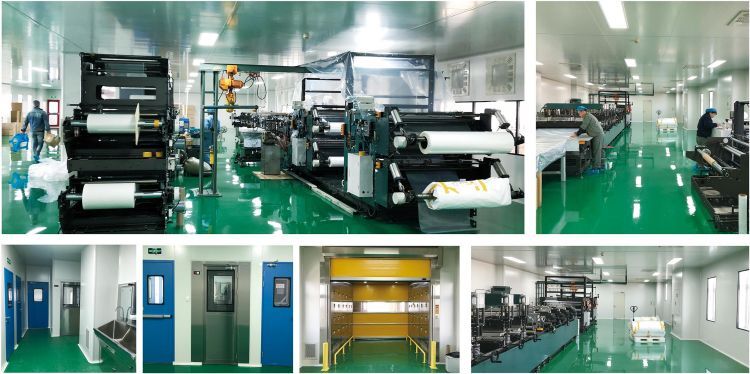Workshop Clean Room: Maintaining a Safe and Productive Environment
- 2024-01-05
- View 11
Clean rooms are essential to a wide range of industries, from pharmaceuticals to electronics manufacturing. They are designed to maintain an environment free of contaminants, including dust, bacteria, and other particles that can compromise the quality of products and equipment. A clean room is a controlled environment where the level of airborne particles is regulated to ensure that the products produced in the room are not compromised Cleanrooms are designed to meet specific standards for air quality and temperature control. In this article, we will explore the importance of workshop clean rooms and how to maintain a safe and productive environment.

What is a workshop clean room?
Workshop clean room is a controlled environment where the level of airborne particles is regulated to ensure that the products produced in the room are not compromised. A clean room is a room that is designed to keep out contaminants that could harm the product or equipment being produced. Cleanrooms are used in a wide range of industries, including pharmaceuticals, electronics, and medical device manufacturing.
Why are workshop clean rooms important?
Workshop clean rooms are essential to maintaining the quality of products and equipment. In many industries, the smallest particles can cause significant damage to equipment or even compromise the quality of the product. Clean rooms ensure that the environment is free of contaminants that can compromise the products being produced. Additionally, clean rooms help to maintain a safe and healthy work environment for employees.
Types of workshop clean rooms
There are different types of workshop clean rooms, ranging from ISO Class 1 to ISO Class 9, with ISO Class 1 being the cleanest. The type of clean room needed depends on the industry and the products being produced.
Components of a workshop clean room
Clean rooms are made up of various components, including air filters, air locks, flooring, and walls. Each component is designed to maintain the cleanliness of the environment.
Maintaining a workshop clean room
Maintaining a clean room is essential to ensure that the environment remains free of contaminants. Regular cleaning and maintenance are necessary to maintain the integrity of the environment. This includes cleaning the floors, walls, and equipment, as well as replacing air filters and monitoring the air quality.
Controlling contamination
Controlling contamination is essential to maintaining a clean room environment This includes controlling the sources of contamination, such as people, equipment, and materials, as well as monitoring the air quality and implementing procedures to minimize the risk of contamination.
Personal protective equipment
Personal protective equipment (PPE) is necessary to maintain the cleanliness of the environment. This includes wearing cleanroom garments, such as gowns, hoods, and gloves, as well as using cleanroom footwear.
Training and certification
Employees who work in clean rooms must receive appropriate training and certification. This includes training on proper gowning procedures, cleaning and maintenance, and contamination control.
Benefits of a workshop clean room
The benefits of a clean room include maintaining the quality of products and equipment, reducing the risk of contamination, and ensuring a safe and healthy work environment for employees.
Common challenges in workshop clean rooms
There are several common challenges in clean rooms, including maintaining a consistent environment, preventing contamination from outside sources, and ensuring compliance with regulations and standards.
FAQs
How often should a workshop clean room be cleaned?
A: Workshop clean rooms should be cleaned regularly, according to a schedule that is appropriate for the industry and products being produced.
What type of personal protective equipment is required in a workshop clean room?
A: Personal protective equipment (PPE) required in a workshop clean room includes cleanroom garments such as gowns, hoods, gloves, and footwear to maintain the cleanliness of the environment.
How is air quality monitored in a clean room?
A: Air quality in a clean room is monitored by particle counters and air flow sensors, which detect and measure airborne particles and air flow rates.
What are some common sources of contamination in a workshop clean room?
A: Common sources of contamination in a workshop clean room include people, equipment, materials, and outside air.
How are employees trained to work in a workshop clean room?
A: Employees working in a workshop clean room receive appropriate training and certification on proper gowning procedures, cleaning and maintenance, and contamination control.
Conclusion
Workshop clean rooms are essential to a wide range of industries, including pharmaceuticals, electronics, and medical device manufacturing. Maintaining a clean room environment requires regular cleaning and maintenance, as well as controlling contamination and implementing procedures to minimize the risk of contamination. With proper training and certification, employees can help maintain a safe and productive environment in the clean room.
More of your interest
Definition And Classification Of Cleanrooms
Clean Room Engineering: Ensuring Maximum Cleanliness Standards for Manufacturing
Facility Design Considerations for Pharmaceutical Cleanrooms
